45 start with E start with E

Janine Rogers reveals that while humans associate eagles with light and learning, they also connect the birds to death and corruption. Eagles adorn flags, crests, and other emblems, but as she shows, they have also been relentlessly persecuted and perceived as predatory threats to livestock. While considering these contradictions, Rogers argues that eagles have suffered from the effects of human activities for years, from pesticide use to habitat destruction and global warming. She demonstrates the dangers of not saving eagles from destruction, as they are key to controlling pest populations and clearing carcasses. Featuring many illustrations of eagles in the wild, art, and popular culture, Eagle shines new light on our complex relationship with these birds, their international significance, and the dire implications of losing them to contemporary ecological threats.
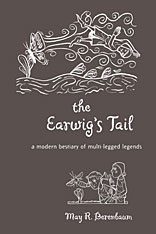
Throughout the Middle Ages, enormously popular bestiaries presented people with descriptions of rare and unusual animals, typically paired with a moral or religious lesson. The real and the imaginary blended seamlessly in these books—at the time, the existence of a rhinoceros was as credible as a unicorn or dragon. Although audiences now scoff at the impossibility of mythological beasts, there remains an extraordinary willingness to suspend skepticism and believe wild stories about nature, particularly about insects and their relatives in the Phylum Arthropoda.
In The Earwig’s Tail, entomologist May Berenbaum and illustrator Jay Hosler draw on the powerful cultural symbols of these antiquated books to create a beautiful and witty bestiary of the insect world. Berenbaum’s compendium of tales is an alphabetical tour of modern myths that humorously illuminates aerodynamically unsound bees, ear-boring earwigs, and libido-enhancing Spanish flies. She tracks down the germ of scientific truth that inspires each insect urban legend and shares some wild biological lessons, which, because of the amazing nature of the insect world, can be more fantastic than even the mythic misperceptions.

Volume IIA of East African Mammals begins a two-part study of East Africa's smallest and least conspicuous mammals. It deals with bats and insectivores, including tenrecs, moles, hedgehogs, and shrews.
In each volume Kingdon combines his text with hundreds of finished drawings and quick sketches, the latter a form of field note that provides an incomparable description of the animal's movements and personality. Kingdom explains his drawings "as a wordless questioning of form. . . . The probing pencil is like the dissecting scalpel, seeking to expose relevant structures that may not be immediately obvious and are certainly hidden from the shadowy world of the camera lens." As an artist, Kingdon's achievement has been compared with Audubon's; as a scientist, his work has made these volumes indispensable to any serious student of East African mammals.

Volume IIB of East African Mammals is a study of some of East Africa's smallest and least conspicuous mammals, hares and rodents.
In each volume Kingdon combines his text with hundreds of finished drawings and quick sketches, the latter a form of field note that provides an incomparable description of the animal's movements and personality. Kingdom explains his drawings "as a wordless questioning of form. . . . The probing pencil is like the dissecting scalpel, seeking to expose relevant structures that may not be immediately obvious and are certainly hidden from the shadowy world of the camera lens." As an artist, Kingdon's achievement has been compared with Audubon's; as a scientist, his work has made these volumes indispensable to any serious student of East African mammals.

Volume IIIA documents the carnivores of East Africa—lions, cheetahs, jackals, otters, civets, genets, mongooses, hyenas, and such lesser-known species as the zorilla and the aardwolf.
The beauty of the animals, so vivid in these incomparable drawings, is made more poignant by the acknowledgment of their increasingly endangered status. Kingdon discusses the inevitable problems posed by large mammal communities in a developing continent and includes numerous maps indicating their declining ranges and populations.

Volume IIIB celebrates the large mammals for which the African plains are so famous—elephants, rhinos, zebras, bushpigs, and warthogs, hippopotamuses, camels, chevrotains, giraffes. Kingdon brings his artist's eye to such puzzles as the zebra's stripes and the giraffe's spots, making original observations throughout the seven volumes about the evolutionary and functional significance of coat color, facial expressions, and curious forms and markings.
The beauty of the animals, so vivid in these incomparable drawings, is made more poignant by the acknowledgment of their increasingly endangered status. Kingdon discusses the inevitable problems posed by large mammal communities in a developing continent and includes numerous maps indicating their declining ranges and populations.

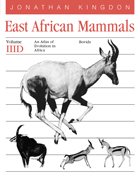
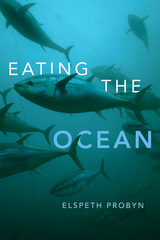
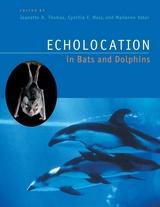
Echolocation in Bats and Dolphins consists of six sections: mechanisms of echolocation signal production; the anatomy and physiology of signal reception and interpretation; performance and cognition; ecological and evolutionary aspects of echolocation mammals; theoretical and methodological topics; and possible echolocation capabilities in other mammals, including shrews, seals, and baleen whales. Animal behaviorists, ecologists, physiologists, and both scientists and engineers who work in the field of bioacoustics will benefit from this book.

"The Ecological Web presents an entirely fresh look at ecology from the autecological perspective, and is a worthy successor to the authors' classic work, The Distribution and Abundance of Animals. The work is original—indeed unique—and the detailed coverage of case histories is unprecedented. The point of view will be controversial, but every ecologist will be impressed with the competence and completeness with which the arguments are mustered. A 'must' for every ecologist and environmental scientist."—Paul R. Ehrlich
"This book is the naturalist's vision of population ecology. The authors do not intend a formal description of the environment, but are seeking a way of functional analysis, a workable framework of theory within which to ask questions that will help us understand the distribution and abundance of animals in natural populations. The Ecological Web should be studied carefully by every population ecologist and should take a prominent place in the teaching of ecology. It marks a very significant period in our science as we change from one paradigm to another."—P. J. den Boer
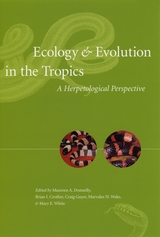
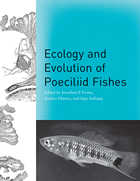
The history of biology is populated by numerous model species or organisms. But few vertebrate groups have aided evolutionary and ecological research more than the live-bearing fishes of the family Poeciliidae. Found throughout tropical and subtropical waters, poeciliids exhibit a fascinating variety of reproductive specializations, including viviparity, matrotrophy, unisexual reproduction, and alternative mating strategies, making them ideal models for research on patterns and processes in ecology, behavior, and evolution.
Ecology and Evolution of Poeciliid Fishes is a much-needed overview of the scientific potential and understanding of these live-bearing fishes. Chapters by leading researchers take up a wide range of topics, including the evolution of unisexual reproduction, life in extreme environments, life-history evolution, and genetics. Designed to provide a single and highly approachable reference, Ecology and Evolution of Poeciliid Fishes will appeal to students and specialists interested in all aspects of evolutionary ecology.
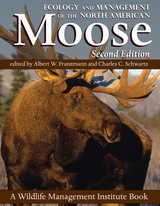
Contributors include Warren B. Ballard, Arnold H. Boer, Anthony B. Bubenik, M. E. Buss, Kenneth N. Child, Vincent F.J. Crichton, Albert W. Franzmann, Kris J. Hundertmark, Patrick D. Karns, Murray W. Lankester, Richard E. McCabe, James M. Peek, Henry M. Reeves, Wayne L. Regelin, Lyle A. Renecker, William M. Samuel, Charles C. Schwartz, Robert W. Stewart, Ian D. Thompson, H. R. Timmermann, and Victor Van Ballenberghe. A Wildlife Management Institute book

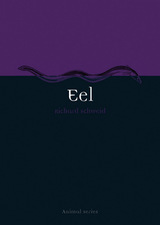
When pulled from the mud of creeks, ponds, rivers, or the sea, the eel, with its slick, snake-like body, emerges as an extremely mundane and even unappealing fish. But don’t let the appearance fool you—the eel has been one of the world’s favorite foods since ancient Greece, and the eel’s life cycle is one of the most remarkable on the planet—during the middle ages, impoverished Londoners survived on eel and the eel later saved the Mayflower pilgrims from starvation on American shores.
In Eel, RichardSchweid chronicles the many facets of these slippery creatures from their natural history to their market value and contemporary consumption to their appearance in art and literature and finally to their present threatened status. So far, eels have steadfastly refused to reproduce in captivity, apparently requiring the vastness of the open ocean to successfully mature—which has imperiled the species’ long-term survival. Schweid explains that freshwater eels are born in remote ocean depths and make a journey of thousands of miles to fresh water where they spend most of their lives before making a return journey to the ocean to mate and die.
Well-illustrated and containing many little-known facts about this surprising fish, Eel will appeal to general readers of natural history and others wishing to discover something more about the common unagi on the sushi menu.

The beauty of the robin’s egg is not lost on the child who discovers the nest, nor on the collector of nature’s marvels. Such instances of wonder find fitting expression in the photographs of Rosamond Purcell, whose work captures the intricacy of nests and the aesthetic perfection of bird eggs. Mining the ornithological treasures of the Western Foundation of Vertebrate Zoology, Purcell produces pictures as lovely and various as the artifacts she photographs. The dusky blue egg of an emu becomes a planet. A woodpecker’s nest bears an uncanny resemblance to a wooden shoe. A resourceful rock dove weaves together scrap metal and spent fireworks. A dreamscape of dancing monkeys emerges from the calligraphic markings of a murre egg.
Alongside Purcell’s photographs, Linnea Hall and René Corado offer an engaging history of egg collecting, the provenance of the specimens in the photographs, and the biology, conservation, and ecology of the birds that produced them. They highlight the scientific value that eggs and nest hold for understanding and conserving birds in the wild, as well as the aesthetic charge they carry for us.
How has evolution shaped the egg or directed the design of the nest? How do the photographs convey such infinitesimal and yet momentous happenstance? The objects in Egg & Nest are specimens of natural history, and in Purcell’s renderings, they are also the most natural art.
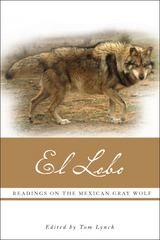
After roaming the desert Southwest for thousands of years, the Mexican gray wolf was, almost in the blink of an eye, driven to the brink of extinction. El Lobo collects writings that explore how this subspecies of wolf was brought so close to the edge of annihilation.
The first section, 'To the Brink,' includes essays that describe wolf biology, the campaign to exterminate wolves from the Southwest, and the wolf’s role in Native American cultures and in Mexican folklore. The second section, 'And Back,' illustrates a turnaround in attitudes and policy and includes Aldo Leopold’s famous essay 'Thinking Like a Mountain,' Rick Bass’s astute analysis of the political divide, and Sharman Apt Russell’s carefully woven plea in which she shares her experience with Pueblo Indian children meeting a wolf in their school auditorium. These essays, from both sides of the contested issue, resonate with passion, conviction, and the desire to save a world that is mightily at risk.

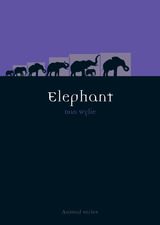
The image of the elephant can be found throughout world cultures as a symbol of intelligence, strength, and loyalty. Wylie draws on a rich array of examples to document that symbolic power, ranging from symbols of the Hindu god of wisdom, Ganesh, to the beloved children’s works Dumbo and Babar the Elephant.
Turning to the elephant’s biological history, Wylie describes the three remaining species—the African Bush Elephant, African Forest Elephant, and the Asian Elephant—and the controversial efforts for elephant conservation. With ivory poaching and human encroachment into the animal’s natural habitats, Wylie argues that we face a uniquely poignant conservation crisis in which elephants and humans both unsustainably consume limited natural resources.
A compelling new entry in the Animal series, Elephant will be necessary for every animal lover’s bookshelf.
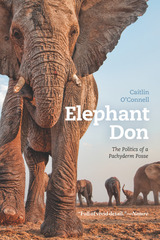
In Elephant Don, O’Connell, one of the leading experts on elephant communication and social behavior, offers a rare inside look at the social world of African male elephants. Elephant Don tracks Greg and his group of bulls as O’Connell tries to understand the vicissitudes of male friendship, power struggles, and play. A frequently heart-wrenching portrayal of commitment, loyalty, and affection between individuals yearning for companionship, it vividly captures an incredible repertoire of elephant behavior and communication. Greg, O’Connell shows, is sometimes a tyrant and other times a benevolent dictator as he attempts to hold onto his position at the top. Though Elephant Don is Greg’s story, it is also the story of O’Connell and the challenges and triumphs of field research in environs more hospitable to lions and snakes than scientists.
Readers will be drawn into dramatic tales of an elephant society at once exotic and surprisingly familiar, as O’Connell’s decades of close research reveal extraordinary discoveries about a male society not wholly unlike our own. Surely we’ve all known a Greg or two, and through this book we may come to know them in a whole new light.
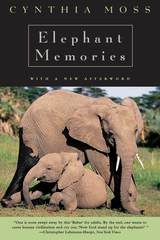
"One is soon swept away by this 'Babar' for adults. By the end, one even begins to feel an aversion for people. One wants to curse human civilization and cry out, 'Now God stand up for the elephants!'"—Christopher Lehmann-Haupt, New York Times
"Moss speaks to the general reader, with charm as well as scientific authority. . . . [An] elegantly written and ingeniously structured account." —Raymond Sokolov, Wall Street Journal
"Moss tells the story in a style so conversational . . . that I felt like a privileged visitor riding beside her in her rickety Land-Rover as she showed me around the park." —Sarah Blaffer Hrdy, New York Times Book Review
"A prose-poem celebrating a species from which we could learn some moral as well as zoological lessons." —Chicago Tribune
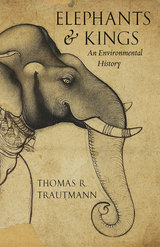
Trautmann traces the history of the war elephant in India and the spread of the institution to the west—where elephants took part in some of the greatest wars of antiquity—and Southeast Asia (but not China, significantly), a history that spans 3,000 years and a considerable part of the globe, from Spain to Java. He shows that because elephants eat such massive quantities of food, it was uneconomic to raise them from birth. Rather, in a unique form of domestication, Indian kings captured wild adults and trained them, one by one, through millennia. Kings were thus compelled to protect wild elephants from hunters and elephant forests from being cut down. By taking a wide-angle view of human-elephant relations, Trautmann throws into relief the structure of India’s environmental history and the reasons for the persistence of wild elephants in its forests.
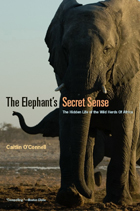
This compelling odyssey of scientific discovery is also a frank account of fieldwork in a poverty-stricken, war-ravaged country. In her attempts to study an elephant community, O’Connell encounters corrupt government bureaucrats, deadly lions and rhinos, poachers, farmers fighting for arable land, and profoundly ineffective approaches to wildlife conservation. The Elephant’s Secret Sense is ultimately a story of intellectual courage in the face of seemingly insurmountable obstacles.
“I was transported by the author’s superbly sensuous descriptions of her years spent studying the animals. . . . Conjures a high-class nature documentary film in prose.”—Steven Poole, Guardian
“A ride as rough and astonishing as the roads of the African floodplain.”—Joan Keener, Entertainment Weekly
“A successful combination of science and soulfulness, explaining her groundbreaking theory of how elephants use seismic communication. . . . O’Connell’s account is studded with sympathetic insights and well-turned phrases.”—Publishers Weekly
“This fascinating book reads like a fast-paced detective story of a scientific discovery and adventure set in contemporary Africa. . . . By the end, O’Connell takes her rightful place among the leading biographers of the African elephant.”—Iain Douglas-Hamilton, author of Among the Elephants
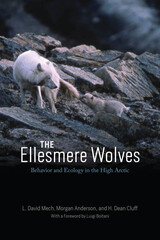
For parts of twenty-four summers, wolf biologist L. David Mech lived with a group of wolves on Ellesmere Island, some six hundred miles from the North Pole. Elsewhere, most wolves flee from even the scent of humans, but these animals, evolving relatively free from human persecution, are unafraid. Having already spent twenty-eight years studying other populations of wolves more remotely by aircraft, snow-tracking, live-trapping, and radio-tracking, Mech was primed to join their activities up close and record their interactions with each other. This book tells the remarkable story of what Mech—and the researchers who followed him—have learned while living among the wolves.
The Ellesmere wolves were so unconcerned with Mech’s presence that they allowed him to camp near their den and to sit on his all-terrain vehicle as he observed them, watching packs as large as seven adults and six pups go about their normal activities. In these extraordinarily close quarters, a pup untying his bootlace or an adult sniffing his gloved hand was just part of daily life. Mech accompanied the wolves on their travels and watched as they hunted muskoxen and arctic hares. By achieving the same kind of intimacy with his wild hosts’ every action that we might experience living with domesticated dogs, Mech gained new insights into common but rarely studied behaviors like pup feeding, food caching, howling, and scent-marking. After Mech’s time at Ellesmere ended, his coauthors and fellow wolf researchers Morgan Anderson and H. Dean Cluff spent parts of four summers studying the wolves via radio collars, further illuminating the creatures’ movements and ecology. This book synthesizes their findings, offering both a compelling scientific overview of the animals’ behavior—from hunting to living in packs to rearing pups—and a tale of adventure and survival in the Arctic.
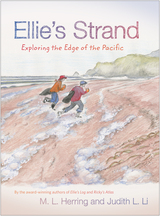
Green Earth Book Award, Honor Book
There are days in late winter when the Pacific coast enjoys a brief spell of clear, warm weather. Most of the winter storms have passed and the summer fog has not yet settled in. This is when some coastal communities plan their annual beach clean-ups.
In this sequel to Ellie’s Log and Ricky’s Atlas, Ellie and Ricky travel to the Oregon coast from their home in the Cascade Mountains to help with a one-day beach clean-up. Hoping to find a prized Japanese glass float, they instead find more important natural treasures, and evidence of an ocean that needs its own global-scale clean-up.
Ellie and Ricky are amazed by their discoveries at the edge of the world’s largest ocean. Together, they realize the power of volunteering and grapple with the challenges of ocean conservation. In her journal Ellie records her observations of their adventures in her own words and pictures.
With charming pen-and-ink drawings and a compelling story, Ellie's Strand makes coastal science exciting for upper elementary school students. It will be a treasured companion for young beach explorers everywhere.
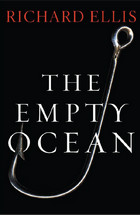
In The Empty Ocean, acclaimed author and artist Richard Ellis tells the story of our continued plunder of life in the sea and weighs the chances for its recovery. Through fascinating portraits of a wide array of creatures, he introduces us to the many forms of sea life that humans have fished, hunted, and collected over the centuries, from charismatic whales and dolphins to the lowly menhaden, from sea turtles to cod, tuna, and coral.
Rich in history, anecdote, and surprising fact, Richard Ellis’s descriptions bring to life the natural history of the various species, the threats they face, and the losses they have suffered. Killing has occurred on a truly stunning scale, with extinction all too often the result, leaving a once-teeming ocean greatly depleted. But the author also finds instances of hope and resilience, of species that have begun to make remarkable comebacks when given the opportunity.
Written with passion and grace, and illustrated with Richard Ellis’s own drawings, The Empty Ocean brings to a wide audience a compelling view of the damage we have caused to life in the sea and what we can do about it. "
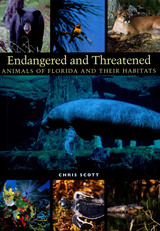
A biological crossroads where temperate gives way to tropical and east blends into west, Florida has over twenty-five primary habitat types, several of which are unique to the state. Within these richly varied natural communities lives an astonishing abundance of animals and plants, making Florida one of the United States' most biologically diverse regions. At the same time, sadly, Florida is also one of the country's most ecologically imperiled regions, second only to California in the number of its animals and plants that have been federally designated as endangered or threatened.
This fully illustrated book is a comprehensive, yet convenient and easy-to-understand guide to Florida's endangered and threatened animals and the habitats that support them. Chris Scott covers all 71 species, subspecies, or populations of mammals, birds, reptiles, fish, crustaceans, insects, corals, and mollusks. His species accounts describe each animal's listed status, identifying characteristics, historical and current distribution, biology, current threats, and conservation efforts. To make the crucial link between animals and their habitats, Scott also includes extensive discussions of Florida's natural regions; human impacts on the environment, including habitat destruction, pollution, and the introduction of invasive, nonnative species; and ongoing efforts to conserve and restore native plant and animal communities. With this wealth of information available in no other single volume, everyone who cares about the natural environment can help preserve one of America's biological treasurehouses.
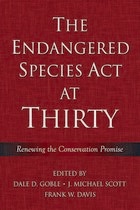
The Endangered Species Act at Thirty is a comprehensive, multidisciplinary review of issues surrounding the Endangered Species Act, with a specific focus on the act's actual implementation record over the past thirty years. The result of a unique, multi-year collaboration among stakeholder groups from across the political spectrum, the two volumes offer a dispassionate consideration of a highly polarized topic.
Renewing the ConservationPromise, Volume 1, puts the reader in a better position to make informed decisions about future directions in biodiversity conservation by elevating the policy debate from its current state of divisive polemics to a more-constructive analysis. It helps the reader understand how the Endangered Species Act has been implemented, the consequences of that implementation, and how the act could be changed to better serve the needs of both the species it is designed to protect and the people who must live within its mandates.
As debate over reforming the Endangered Species Act heats up in the coming months, these two books will be essential references for policy analysts and lawmakers; professionals involved with environmental law, science, or management; and academic researchers and students concerned with environmental law, policy, management, or science.
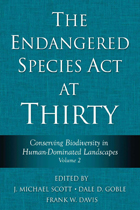
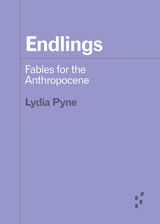
Amid the historical decimation of species around the globe, a new way into the language of loss
An endling is the last known individual of a species; when that individual dies, the species becomes extinct. These “last individuals” are poignant characters in the stories that humans tell themselves about today’s Anthropocene. In this evocative work, Lydia Pyne explores how discussion about endlings—how we tell their histories—draws on deep traditions of storytelling across a variety of narrative types that go well beyond the science of these species’ biology or their evolutionary history.
Endlings provides a useful and thoughtful discussion of species concepts: how species start and how (and why) they end, what it means to be a “charismatic” species, the effects of rewilding, and what makes species extinction different in this era. From Benjamin the thylacine to Celia the ibex to Lonesome George the Galápagos tortoise, endlings, Pyne shows, have the power to shape how we think about grief, mourning, and loss amid the world’s sixth mass extinction.
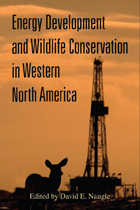
Energy Development and Wildlife Conservation in Western North America offers a road map for securing our energy future while safeguarding our heritage.
Contributors show how science can help craft solutions to conflicts between wildlife and energy development by delineating core areas, identifying landscapes that support viable populations, and forecasting future development scenarios to aid in conservation design. The book
- frames the issue and introduces readers to major types of extraction
- quantifies the pace and extent of current and future energy development
- provides an ecological foundation for understanding cumulative impacts on wildlife species
- synthesizes information on the biological response of wildlife to development
- discusses energy infrastructure as a conduit for the spread of invasive species
- compares impacts of alternative energy to those of conventional development
The final section calls for a shift away from site-level management that has failed to mitigate cumulative impacts on wildlife populations toward broad-scale planning and implementation of conservation in priority landscapes. The book concludes by identifying ways that decision makers can remove roadblocks to conservation, and provides a blueprint for implementing conservation plans. Energy Development and Wildlife Conservation in Western North America is a must-have volume for elected officials, industry representatives, natural resource managers, conservation groups, and the public seeking to promote energy independence while at the same time protecting wildlife.
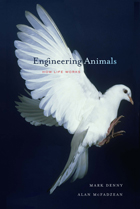
The alarm calls of birds make them difficult for predators to locate, while the howl of wolves and the croak of bullfrogs are designed to carry across long distances. From an engineer's perspective, how do such specialized adaptations among living things really work? And how does physics constrain evolution, channeling it in particular directions?
Writing with wit and a richly informed sense of wonder, Denny and McFadzean offer an expert look at animals as works of engineering, each exquisitely adapted to a specific manner of survival, whether that means spinning webs or flying across continents or hunting in the dark-or writing books. This particular book, containing more than a hundred illustrations, conveys clearly, for engineers and nonengineers alike, the physical principles underlying animal structure and behavior.
Pigeons, for instance-when understood as marvels of engineering-are flying remote sensors: they have wideband acoustical receivers, hi-res optics, magnetic sensing, and celestial navigation. Albatrosses expend little energy while traveling across vast southern oceans, by exploiting a technique known to glider pilots as dynamic soaring. Among insects, one species of fly can locate the source of a sound precisely, even though the fly itself is much smaller than the wavelength of the sound it hears. And that big-brained, upright Great Ape? Evolution has equipped us to figure out an important fact about the natural world: that there is more to life than engineering, but no life at all without it.
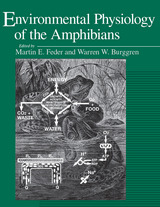
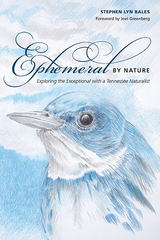
In this captivating collection of twelve essays, a testament to a lifetime’s fascination with the outdoors and its myriad wonders, naturalist Stephen Lyn Bales examines a variety of flora and fauna that in one way or another can be described as “ephemeral”—that is, fleeting, short-lived, or transient.
Focusing on his native East Tennessee, Bales introduces us to several oddities, including the ghost plant, a wispy vascular plant that resembles a rooster’s tail and grows mainly in areas devoid of sunlight; the Appalachian panda, an ancestor of today’s red panda that wandered the region millions of years ago and whose fossil remains have only recently been discovered; and the freshwater jellyfish, a tiny organism that is virtually invisible except for those hot summer days when clusters of them bloom into shimmering “medusae,” sometimes by the thousands. Other essays consider such topics as the plight of the monarch butterfly, a gorgeous insect whose populations have dropped by 90 percent in only the last two decades; the reintroduction of the lake sturgeon, one of nature’s most primitive and seldom-seen fish, into the waters of the Tennessee Valley; and the surprising emergence of coyote-wolf and coyote-dog hybrids in the eastern states.
Written with insight, humor, and heart, Ephemeral by Nature is as entertaining as it is instructive. Along with a wealth of biological details—and his own handsome pen-and-ink drawings—Bales fills the book with delightful anecdotes of field trips, species-protection efforts, and those thrilling occasions when some elusive member of the natural order shows itself to us, if only for a brief moment.
Stephen Lyn Bales, senior naturalist at Ijams Nature Center in Knoxville, is the author of Natural Histories: Stories from the Tennessee Valley and Ghost Birds: Jim Tanner and the Quest for the Ivory-billed Woodpecker, 1935–1941, both published by the University of Tennessee Press.

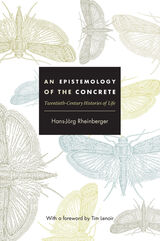
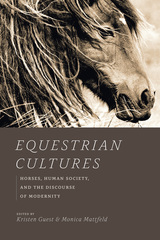
Kristen Guest and Monica Mattfeld place the modern period front and center in this collection, illuminating the largely untold story of how the horse has responded to the accelerated pace of modernity. The book’s contributors explore equine cultures across the globe, drawing from numerous interdisciplinary sources to show how horses have unexpectedly influenced such distinctively modern fields as photography, anthropology, and feminist theory. Equestrian Cultures boldly steps forward to redefine our view of the most recent developments in our long history of equine partnership and sets the course for future examinations of this still-strong bond.
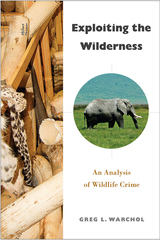
Illegally harvested ivory and endangered plants, mammals, reptiles, birds, and even insects are easily found for sale throughout East and Southern Africa. And this is just one part of the multi-billion-dollar illegal global trade in wildlife.
Wildlife is an important and even vital asset for both intrinsic and economic reasons. Yet it is illegally exploited on a massive scale to the point where some species now risk extinction. Exploiting the Wilderness provides a concise overview of this shameful business, describing some of the main species being exploited and examining select wildlife whose survival is imperiled due to heavy pressure from poachers to meet consumer demand.
Greg Warchol draws on his firsthand experience and research in Africa to examine the structure and operation of the illegal trade in wildlife. He identifies the participants as well as their motivations and operations, and explains the behavior of poachers, traffickers, and consumers of illegally obtained goods. He concludes with a description of legislative and law enforcement efforts to control and prevent wildlife exploitation along with a number of contemporary conservation initiatives designed to improve the ability of rangers to protect wildlife.
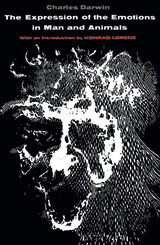

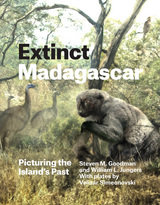
In Extinct Madagascar, noted scientists Steven M. Goodman and William L. Jungers explore the recent past of these land animal extinctions. Beginning with an introduction to the geologic and ecological history of Madagascar that provides context for the evolution, diversification, and, in some cases, rapid decline of the Malagasy fauna, Goodman and Jungers then seek to recapture these extinct mammals in their environs. Aided in their quest by artist Velizar Simeonovski’s beautiful and haunting digital paintings—images of both individual species and ecosystem assemblages reproduced here in full color—Goodman and Jungers reconstruct the lives of these lost animals and trace their relationships to those still living.
Published in conjunction with an exhibition of Simeonovski’s artwork set to open at the Field Museum, Chicago, in the fall of 2014, Goodman and Jungers’s awe-inspiring book will serve not only as a sobering reminder of the very real threat of extinction, but also as a stunning tribute to Madagascar’s biodiversity and a catalyst for further research and conservation.
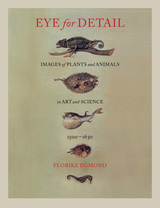
Egmond shows how the format of images in nature studies changed dramatically during the Renaissance period, as high-definition naturalistic representation became the rule during a robust output of plant and animal drawings. She examines what visual techniques like magnification can tell us about how early modern Europeans studied and ordered living nature, and she focuses on how attention to visual detail was motivated by an overriding question: the secret of the origins of life. Beautifully and precisely illustrated throughout, this volume serves as an arresting guide to the massive European collections of nature drawings and an absorbing study of natural history art of the sixteenth century.
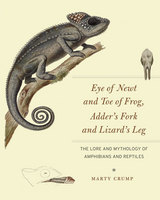
Frogs are worshipped for bringing nourishing rains, but blamed for devastating floods. Turtles are admired for their wisdom and longevity, but ridiculed for their sluggish and cowardly behavior. Snakes are respected for their ability to heal and restore life, but despised as symbols of evil. Lizards are revered as beneficent guardian spirits, but feared as the Devil himself.
In this ode to toads and snakes, newts and tuatara, crocodiles and tortoises, herpetologist and science writer Marty Crump explores folklore across the world and throughout time. From creation myths to trickster tales; from associations with fertility and rebirth to fire and rain; and from the use of herps in folk medicines and magic, as food, pets, and gods, to their roles in literature, visual art, music, and dance, Crump reveals both our love and hatred of amphibians and reptiles—and their perceived power. In a world where we keep home terrariums at the same time that we battle invasive cane toads, and where public attitudes often dictate that the cute and cuddly receive conservation priority over the slimy and venomous, she shows how our complex and conflicting perceptions threaten the conservation of these ecologically vital animals.
Sumptuously illustrated, Eye of Newt and Toe of Frog, Adder’s Fork and Lizard’s Leg is a beautiful and enthralling brew of natural history and folklore, sobering science and humor, that leaves us with one irrefutable lesson: love herps. Warts, scales, and all.
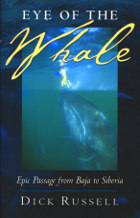
READERS
Browse our collection.
PUBLISHERS
See BiblioVault's publisher services.
STUDENT SERVICES
Files for college accessibility offices.
UChicago Accessibility Resources
home | accessibility | search | about | contact us
BiblioVault ® 2001 - 2024
The University of Chicago Press









